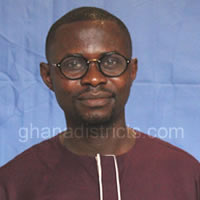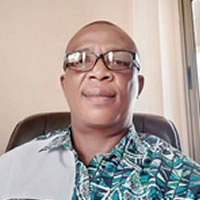Ethnicity and Religion
The main tribes in the district are the Ashantis and the Bonos constituting about 54.3% of the surveyed population. These tribes have much in common. Among the minor tribes in the district are the northern tribes (Wangara, Dagombas, Kusasis) forming about 19.4%. Others include the Fantes and Ewes. The homogeneous character of the residents is welcomed as the likelihood of ethnic conflicts is minimized. The long stay of the migrant settlers also puts them in a position of readiness to support long term development projects.
Apart from the Wangara and Dagombas who are predominantly Moslems, the rest are Christians with few practicing traditional religion. About 73.3% are Christians, 23.8% Moslems and 2.9% practice traditional religion. The vital role of churches and presently Moslems in the dissemination of information, morals and the initiation of development projects makes the predominance of Christians in the district highly favourable for development; e.g. the District Hospital at Hwidiem and O.L.A. Senior Secondary School were built by the Catholic Church. The above notwithstanding various Islamic basic institutions do exist in the district.
Tourism Attractions
Tourism services like hotels, restaurants and telecommunication centers are very few in the district. Currently, five hotels / Guest Houses and one Restaurant operate in the district namely;
Kwateng Guest House, Hwediem
- Sambra Guest House, Hwediem
- Alabama Hotel, Kenyasi No. 2
- Francisca Guest House, Kenyasi No. 2
- Nana Donkye Guest House, Dadiesoaba
- Ultimate Restaurant, Kenyasi No.1
There is the need for the provision of these services and facilities in order to meet the growing demand for hospitality service as a result of the mining activities currently going on in the district. This could also serve as an alternative source of income to the District Assembly as well as the communities as more people will be employed to render service to customers.
Sites for Historic or Aesthetic Importance
The district has some sites of historic, scientific or aesthetic importance. These include:-
The Gambia scarp believed to be rich in minerals deposits and the Rocky plain at Gambia
Hotels
Hospitality Services
Hospitality services like hotels, restaurants and guest houses are very few in the District. Currently, five Hotels / Guest Houses and one Restaurant operate in the District namely;
- Alabama Hotel, Kenyasi No. 2
- Francisca Guest House, Kenyasi No. 2
- Ultimate Restaurant, Kenyasi No.1
- Georgina Obenewaa Memorial Guest House Kenyasi No.2
- Octagon Guest House, Kenyasi No. 2
There is the need for the provision of these services and facilities in order to meet the growing demand for hospitality service as a result of the mining activities currently going on in the District. This could also serve as an alternative source of income to the District Assembly as well as the communities as more people will be employed to render services to customers.
Culture and Traditional Setup
The District has three paramouncies namely, Kenyasi No.1, Kenyasi No.2 and Ntotroso traditional councils. The chiefs have much influence on their people; respect the codified customs of the land. When it comes to respect for traditional rulers, the total embracing of the people in Asutifi North District cannot be overempasised. The rigid and organised nature of these traditional institutions creates a favourable ground for the Assembly to interact with the various communities freely. All projects meant for the communities are channeled through the traditional rulers and their able Assembly members. Tuesdays are set aside for the people (communities) in most parts of the District not to go to farm or as a sacred day.
However, communal labour is organised on Tuesdays so that people take advantage to tidy up their surroundings.
The indigenes are predominantly Akans who speak mainly Asante Twi and are largely Christians. Among the minor ethnic groups in the District are the Ewes, Wangaras, Dagombas and Kusasis who constitute about 35 percent of the population. The peaceful co-existence that exists among the residents is welcomed as the likelihood of ethnic conflicts is minimised. The District is well noted for the annual Apomasu Festival which is celebrated in every first quarter of the year by the Chiefs and people of Ntotroso.
The most preferred food is ‘fufu’ which is usually prepared with cassava and plantain or cocoyam and served with soup. Wax print is the main traditional attire; it is worn by males and females to social gatherings like funerals, church, festival, wedding and naming ceremonies. The main dance is ‘Adowa’. ‘Kete’ and ‘Nwomkro’. Funerals and Sacred Days ‘Akwasidae’ and ‘Awukudae’ are important cultural practices of the people in the District.
The main traditional knowledge in the District is Agriculture (crop farming and livestock, cooking/food processing, wood carving, batik, tie & dye and basket weaving.
Ethnic Diversity
The main tribes in the District are the Ashantis and the Bonos constituting about 54.3% of the surveyed population. These tribes have much in common. Among the minor tribes in the District are the northern tribes (Wangara, Dagombas, Kusasis) forming about 19.4%. Others include the Fantes and Ewes. The homogeneous character of the residents is welcomed as the likelihood of ethnic conflicts is minimised. The long stay of the migrant settlers also puts them in a position of readiness to support long term development projects. Table 1.8 shows the composition of ethnic groups in the District.
Among the religious groups in the District namely, Christianity, Islam and Traditional Religion, Christian Religion has the largest proportion of 75.9 percent, followed by Islam (15.9%). Those who do not associate with any religion constitute a little more than six percent (6.3%) of the population.
Of those who profess no religion, there are more males (67.6%) than females (32.4%). Similarly, the Pentecostal and Charismatic followers within the Christian community have higher proportion of females than males. Similarly, a higher proportion of females than males belong to other religion faiths.
Positive and Negative Cultural Practices
There are certain features of the culture of the people in the District that are common to all the ethnic groups and bind them together. Some of these cultural practices have their positive and negative effects.
One of the positive cultural practices among the people in the District is funeral celebration. Death is inevitable end of man. The people also have some beliefs that death is a journey to ancestral world hence; there is the need for the organisation of a befitting funeral. Death rites are performed when a person dies. To make this transition successful, many rites are performed.
The negative cultural practice that has become endemic in some parts of the District is the early or forced marriages of girls who are in teens. Sometimes it is sad to note that girls of school going age have dropped out of school and enter into early marriages. It is high time the Ministry of Gender and Social Protection stepped in to avert this situation. Widowhood rites belong to a thing of the past; presumably the rites are sinking into oblivion.
Chieftaincy is one of the institutions that make the people homogenous. There are chiefs in almost every community in the District who are the traditional leaders in the various communities. However, there are some communities and other farming communities that are beset with chieftaincy conflict. As a result, stool lands revenue and timber royalties due the District have been locked-up over the years. Development projects too, cannot be implemented in these areas because of land litigation.
Implications of Cultural Practices on Development
The positive cultural practices and the closeness and harmony in the traditional set-up are a healthy sign for traditional development. The brotherliness in the traditional authorities has greatly reduced the chieftaincy disputes in the area as the chiefs see themselves as brothers. In this case, when a chieftaincy dispute arises, they team up and solve the problem amicably without resorting to arbitration from the Manhyia Palace in Kumasi.
The only problem which sometimes crop-up is a competition or struggle for a project to be sited in their communities, which tend to delay the construction of a project thereby slowing down the development of the District.
Date Created : 11/14/2017 4:09:44 AM





 facebook
facebook X (twitter)
X (twitter) Youtube
Youtube +233 593 831 280
+233 593 831 280 0800 430 430
0800 430 430 GPS: GE-231-4383
GPS: GE-231-4383 info@ghanadistricts.com
info@ghanadistricts.com Box GP1044, Accra, Ghana
Box GP1044, Accra, Ghana